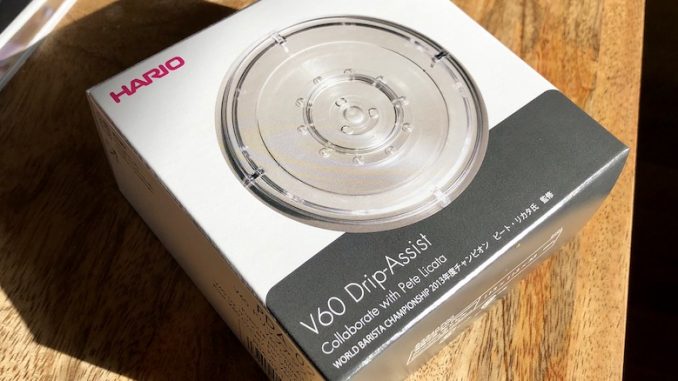
Hario and 2013 World Barista Champ Pete Licata aim to create a solution to evening water dispersion with this handy new product.
BY KATRINA YENTCH
BARISTA MAGAZINE ONLINE
Photos provided by Katrina Yentch
It takes a lot for me to switch up my morning pourover routine. The high-tech drip coffee maker I own sits collecting dust at my brewing station at home, and despite how much I love the taste of AeroPress, it’s still not the first thing I reach for in the mornings. The pourover is not only a preferred brewing method for me, it’s a morning routine that’s hard to break. So, when I saw an accessory to match this tried and true routine, I had to give it a shot.
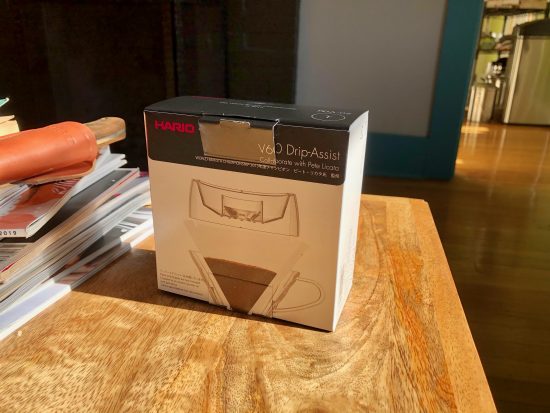
The Hario Drip Assist is a product designed in collaboration with 2013 World Barista Champion Pete Licata, who was inspired by the shower heads within drip coffee makers to create this pourover “attachment” to the Hario V60. With the intention to create an even water flow and dispersion across the pourover bed, this plastic cylinder, which similarly mimics a shower head, has a couple of features designed to do just that.
The Drip Assist comes designed with two different types of holes punctured in the center of it. One portion has larger holes intended for faster water flow and high turbulence, encircled by another exterior section with smaller holes for lighter turbulence. The sections are separated by a sheet of plastic that wraps around the larger holes.
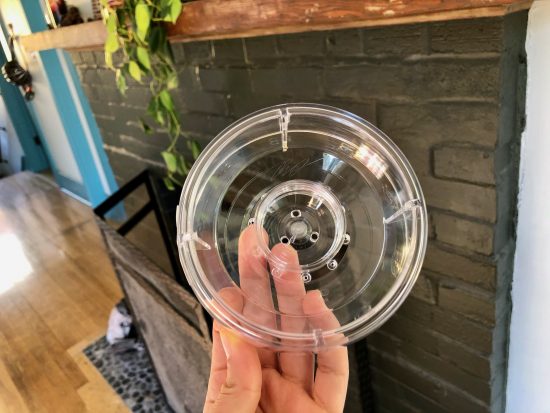
By including both of these features, Pete confirms that the Drip Assist allows users to personalize their brewing method in many different ways. Additionally, creating this shower head effect enforces an even dispersion of water flow more efficiently than the single stream produced by a gooseneck kettle. The Drip Assist also eliminates the need for a gooseneck kettle, which scores extra points for me since I always like to suggest to my friends more cost-effective ways to brew coffee, and a $50+ gooseneck kettle is usually not on that list of suggestions.
The smaller holes of the Drip Assist deliver about 3.5 grams of water per second, while the larger ones can drip as much as 8 grams/second. The best way to utilize this, Pete suggests, is by blooming your coffee with the larger holes in order to saturate the grounds quicker, and to utilize the exterior holes for your second and third pours. He also advises that you should allow water to fall over from the inner and outer areas in order to further create an even dispersion of water throughout the bed, and to brew a couple degrees hotter than you normally would to make up for the heat loss that occurs in the plastic (although the material is PCT resin).
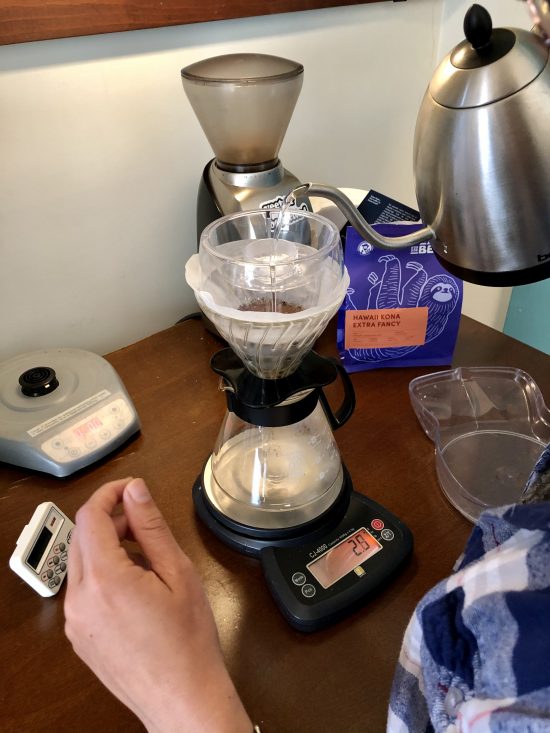
To compare the taste of coffee brewed with the Hario Drip Assist, I produced the same coffee recipe on a V60 with and without the product. What I found was that the coffee brewed with the Drip Assist resulted in a much quicker brew time compared to a regular V60. With a dial-in of 22 grams of coffee and 360 grams of water, it took 2:30 to brew—more than a minute quicker than the regular V60, which took 3:45.
I imagine the quicker brew time with the Drip Assist was due to a couple of internal and external factors. One: The smaller holes from the Drip Assist produce a much lighter flow of water than my hand pours, resulting in less agitation and therefore quicker filtration. Another element that results out of less agitation is less migration of fines, or smaller coffee grinds. Commonly, when brewing a pourover with a gooseneck kettle, there tend to be fines that float to the top because of the aggressive stream produced by the kettle. This usually causes the second or third pours to “choke up” the grounds in the brewing process, causing a slower filtration time (and possibly uneven extraction).
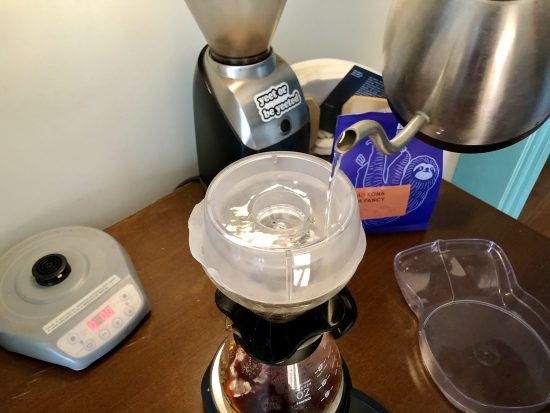
In regards to fines, there were noticeably less of them sitting at the top of the bed of coffee after using the Drip Assist. Not only that, but the bed was also remarkably flat, telling me that there was certainly an even dispersion and extraction rate. By comparison, in my V60 brew without the Drip Assist, I noticed a much sludgier (but still flat) bed of coffee, which probably explains the 3:45 brew time. Regardless, while both still tasted delicious, I tasted a fuller-bodied cup of coffee with the regular V60 than the Drip Assist-produced one.
So, to fix that, I brewed another coffee with the Drip Assist with a grind size two notches finer than my first brew (10 on a Baratza Virtuoso instead of 12). To my surprise, the Drip Assist produced almost the exact same brew time (2:40) but with a fuller-tasting cup of coffee. For this result, I imagine it manages to stay generally the same because of the above-mentioned reason: less migration of fines.
The only minor problem I noticed with the Drip Assist is the way it steams up while brewing, making it a little difficult to sense when to pulse coffee since I couldn’t see it as clearly. However, if you’re pouring continuously it’s probably not a huge deal. What I like most about this product is that it’s not over-engineered. It’s simply a very user-friendly product to brew with, and a cost-effective way to make delicious coffee ($13.50 USD and 1100 JPY).
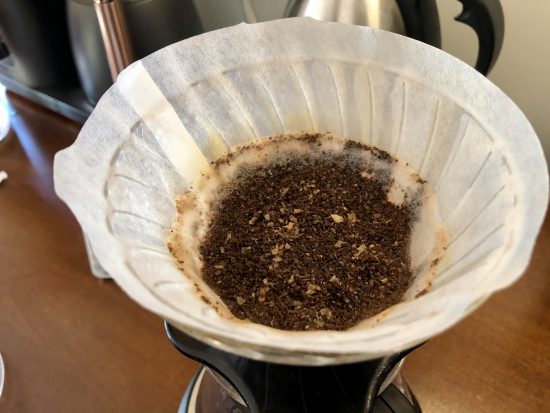
I would definitely recommend this product to friends on a budget, fans of Pete Licata and Hario products, and folks who haven’t yet learned the nuances of manually pouring water for coffee. I will certainly be incorporating this into my morning coffee routine. Although, when I have extra time to focus my efforts on my pour technique (which I totally do on Sunday mornings before my favorite YouTuber releases their weekly video), then I’ll likely be reverting back to my old ways to savor my mornings that much more.

